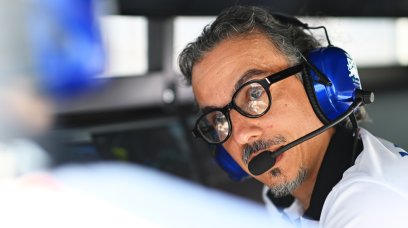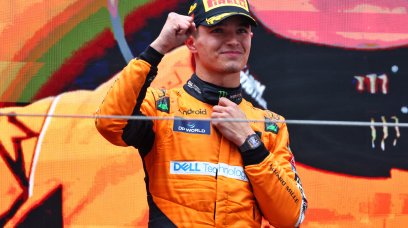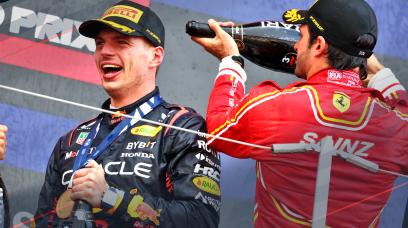"They have certainly found something", these are the very first pessimistic statements by Charles Leclerc after retiring from the Bahrain GP on Lap 41, due to a failure in the electrical part of the SF-23 power unit. The bitterness for the premature race finish therefore seemed to be dominated by the awareness that Red Bull and Max Verstappen would still have been largely out of reach of the Monegasque driver. "In some sections the gap with them in terms of pace was about a second," Leclerc continued, shedding light on the performance gap between Ferrari and Red Bull. In fact, not only did the stopwatch support Leclerc's impressions, but observing the dynamics of the RB19 from the outside, i.e. its perfect balance, one got the visual sensation that this Red Bull car was in fact insensitive to the variation of the fuel load. We mean that the reactivity and the reduced degradation of the tyres with any compound represents the most determining competitive factor, which became apparent both in pre-season testing and in the entire race weekend. The RB19 is not only characterised by efficient and refined aerodynamics, but represents the perfect combination between vehicle dynamics, the visible aerodynamic concept and the floor of the car. The combination of these factors has made it possible to make the car perfect in all conditions. Article continues below image.
The remarkable set-up performance of the RB19
As known, the ride heights are a critical factor for aerodynamic performance of the car, in terms of load generated. In practice, the more a car travels with the surface hugging the asphalt, the higher the load produced, with a minimum drag produced. This allows you to mount more unloaded wings while still being able to count on optimal traction created by the load, and accurate directionality of the front end. However, the contradiction of a set-up that is too low is that the car can be subjected to violent impacts with the ground, even more significantly with the tank fully loaded with fuel. It is striking how the RB19 has not shown the slightest variation in dynamic behaviour with the tank full or empty. In essence, it is as if it were mechanically able to maintain a constant set-up unaffected by weight variations. The front suspension follows the same pull-rod layout adopted in 2022, with a high inclination of the upper wishbone arms. This feature has the function of increasing the 'anti-dive' effect or anti-sinking of the front end. In this way, by better controlling the variations in height from the ground at the front, it is possible to effectively manage traction at the rear. The car, therefore, does not lose grip in the rapid changes of direction or under braking at the end of the straights. In an absolutely legal way, it is as if the RB19 were equipped with active suspensions, like those created and developed by Adrian Newey himself exactly 30 years ago at Williams. The effects are the same, with an always-optimal grip, the overheating of the tread is considerably reduced and, therefore, so is the performance degradation of the rear tyres.
The quality original features of the AMR23
But the real revelation this weekend, even if clues had already emerged in the tests, was Aston Martin. For the entire weekend the AMR23 showed outstanding performances, especially with Fernando Alonso. In fact, it proved to be particularly effective on the flying lap, but nonetheless in the race pace. The aerodynamics very effective, with refined and original solutions, which constitute a trademark of the duo made up of Technical Director Dan Fallows and Luca Furbatto, who is responsible for aerodynamics of the Silverstone team. In detail, the front suspension is very interesting and refined, characterised by its anti-dive geometry. The position of the pick up points of the upper wishbone follows a precise angle, not only for aerodynamic purposes of down wash, but above all precise management of the height variations from the ground. The well-finished details of this single-seater are very interesting, with an unprecedented, original solution at the side bulkheads of the rear wing. In practice, in the lower part there is an outward diverging profile which allows accurate management of the outgoing flow from the very sensitive area, located between the rear wheels and the wing itself. In this way the efficiency of the diffuser, in terms of extracting the air from underneath, is increased.
Ferrari suffer fragility in several key areas
One fact, unfortunately not positive, which already emerged in the tests and continued over the weekend of the Grand Prix, is that of a fragility, or rather inadequate consistency, of some elements of the SF-23. We are referring to the problems encountered with the single pylon rear wing briefly fitted to Leclerc's car but then not used due to DRS problems and excessive lateral flexibility, seen in the free practice sessions. The aerodynamic crushing of the nose fairing seen in testing, and also the sudden failure of a wheel arch during the Bahrain GP qualifying, could suggest an intensive search for weight reduction which undermined the strength of these elements.
Most read



















